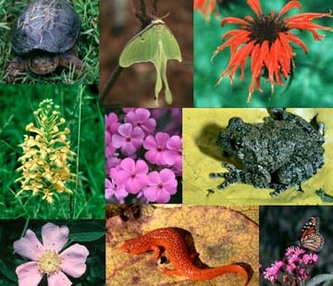Statement of Purpose

Overview of Local and Global Problem:
Overview of Local Problem: There is evidence that climate change is already prompting concomitant changes in Rhode Island ecosystems, including the shift in marine life in Narragansett Bay from largely vertebrates to primarily invertebrates, thus changing food chains and reducing biodiversity. In addition, Rhode Island forests are also experiencing losses. Pests and pathogens have moved further north as a result of warmer temperatures and have damaged Rhode Island woodlands and freshwater aquatic systems, including infectious agents and exotic plant and animal species. An education program that helps students to connect local environmental changes with broader global trends will hopefully result in a better understanding of actions that can be taken to minimize the impacts.
Our Experiment:
Our plan of attack is to educate 4th to 8th grade kids in Rhode Island is to teach them about the basics of ecosystems, biodiversity, climate change, and global warming. We will illustrate through in-class and outdoor projects how these things are interrelated. We will educate them on biodiversity losses in ecosystems in general (deserts, rainforests, coral reefs, arctic, etc) and also the losses locally in Narragansett Bay. We will demonstrate to them ways they can change their habits and reduce their ecological footprints. With the use of video, pictures, and current news/real life examples we hope to capture the attention of these young kids and we hope to leave a lasting impression on them.
We will produce a sample PowerPoint presentation to be given my teachers to students. These PowerPoint presentations should be accompanied by handouts with relevant information. The PowerPoint presentation should lend itself to interactive discussions with students. For example, engaging students on the variety of species they would expect to find in certain ecosystems. Teachers should lead an interactive discussion with the students on what they think biodiversity is and how global warming is affecting Rhode Island’s biodiversity.
Challenges:
Solutions:
Overview of Local Problem: There is evidence that climate change is already prompting concomitant changes in Rhode Island ecosystems, including the shift in marine life in Narragansett Bay from largely vertebrates to primarily invertebrates, thus changing food chains and reducing biodiversity. In addition, Rhode Island forests are also experiencing losses. Pests and pathogens have moved further north as a result of warmer temperatures and have damaged Rhode Island woodlands and freshwater aquatic systems, including infectious agents and exotic plant and animal species. An education program that helps students to connect local environmental changes with broader global trends will hopefully result in a better understanding of actions that can be taken to minimize the impacts.
Our Experiment:
Our plan of attack is to educate 4th to 8th grade kids in Rhode Island is to teach them about the basics of ecosystems, biodiversity, climate change, and global warming. We will illustrate through in-class and outdoor projects how these things are interrelated. We will educate them on biodiversity losses in ecosystems in general (deserts, rainforests, coral reefs, arctic, etc) and also the losses locally in Narragansett Bay. We will demonstrate to them ways they can change their habits and reduce their ecological footprints. With the use of video, pictures, and current news/real life examples we hope to capture the attention of these young kids and we hope to leave a lasting impression on them.
We will produce a sample PowerPoint presentation to be given my teachers to students. These PowerPoint presentations should be accompanied by handouts with relevant information. The PowerPoint presentation should lend itself to interactive discussions with students. For example, engaging students on the variety of species they would expect to find in certain ecosystems. Teachers should lead an interactive discussion with the students on what they think biodiversity is and how global warming is affecting Rhode Island’s biodiversity.
Challenges:
- Will students be engaged in the information?
- Young students may not understand and/or retain the information
- Availability of different settings (different ecosystems)
- Availability of equipment to examine microscopic organisms
Solutions:
- Hands on learning that allows students to be engaged in information and remember processes
- Field trips to closest settings (salt marshes, beach)
- Examine pictures on handouts of microscopic organisms if equipment not available
